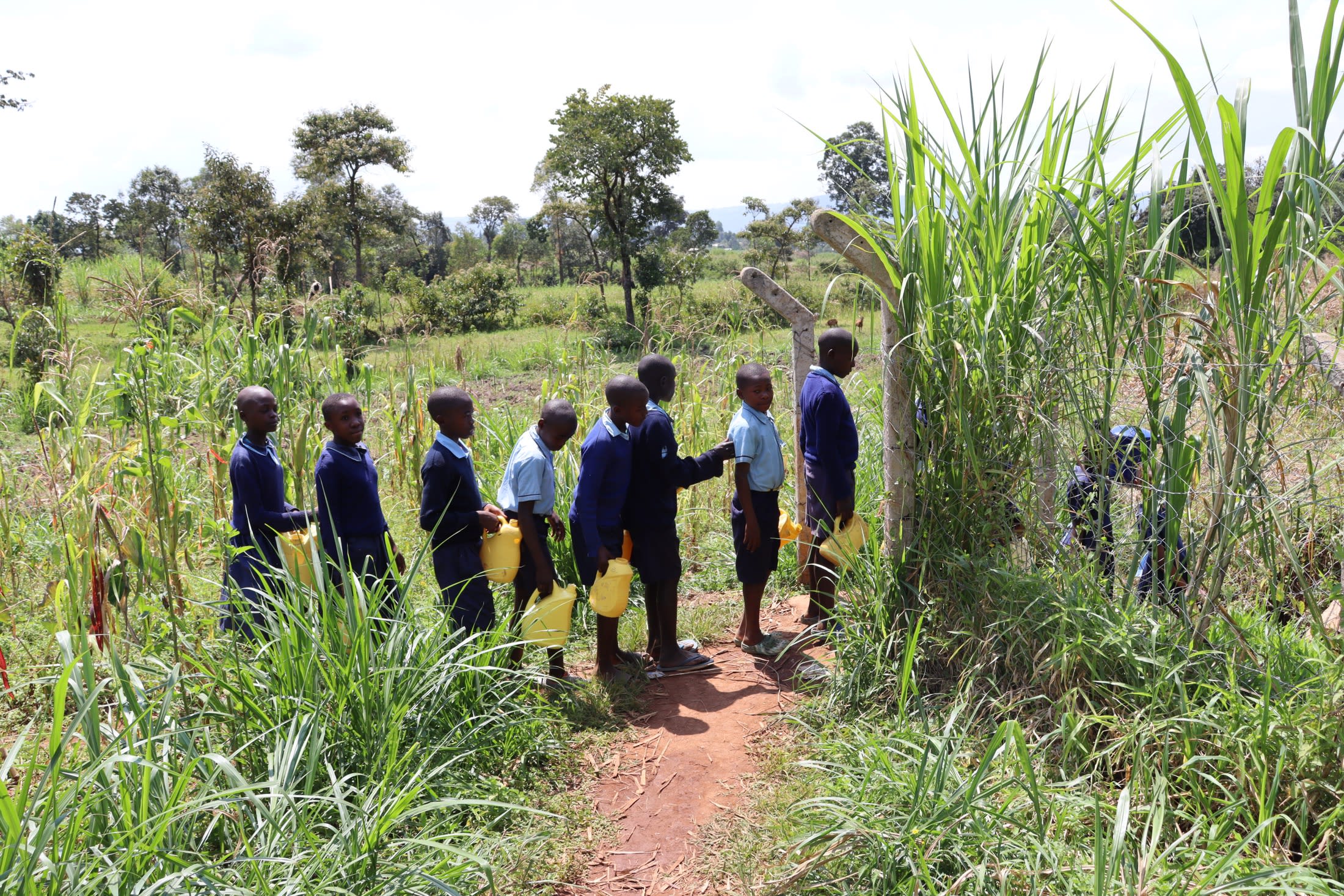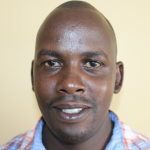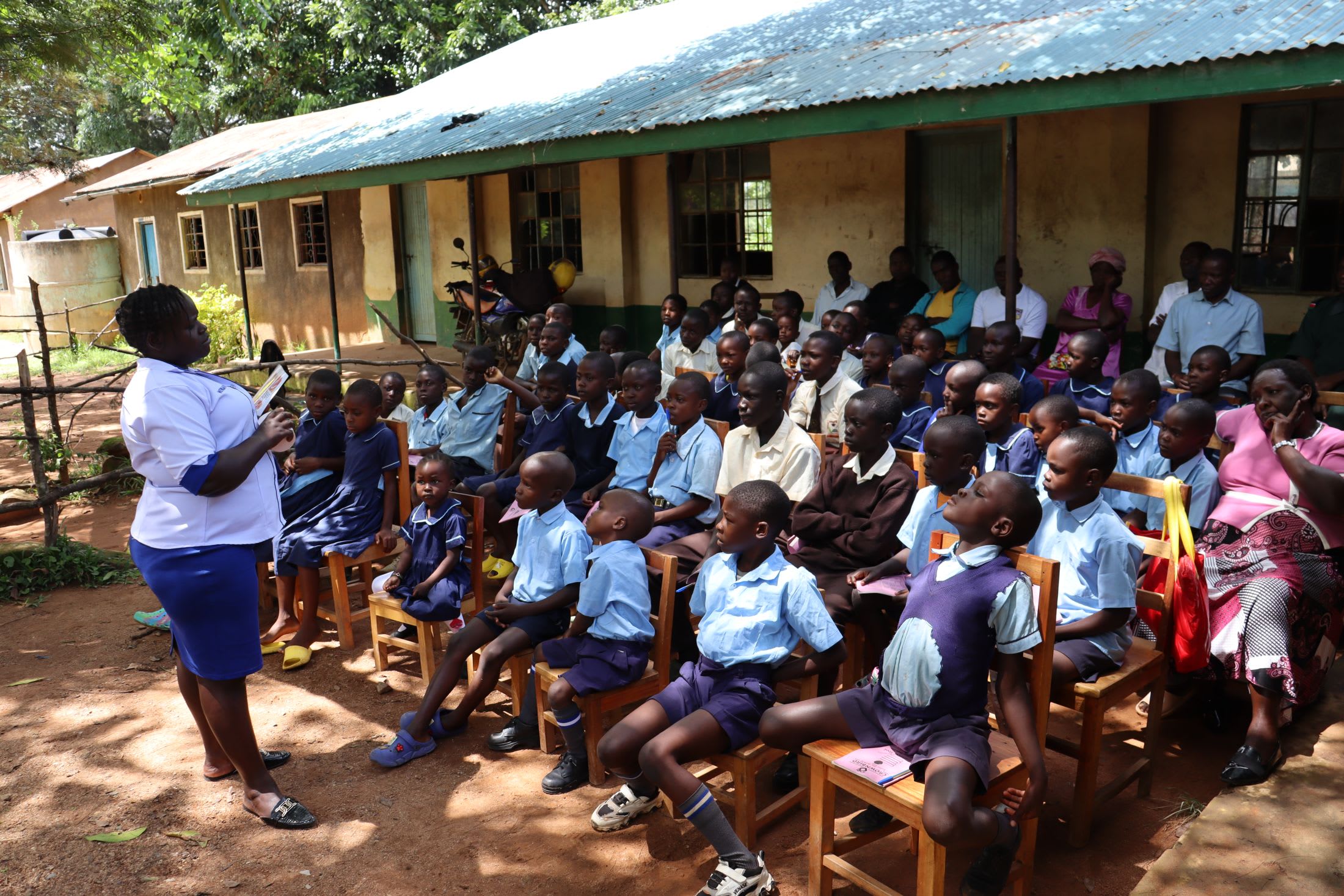The 692 students and staff of Mang'uliro Primary School struggle to access sufficient water to meet their daily needs. Students seem to spend more time outside the classroom searching for water or suffering from water-related illnesses than they do in class, leaving their futures in question.
"The main water source in the school is [a] rainwater harvesting tank [but it] can't provide sufficient water to run the school throughout the school calendar because it is affected by seasons. Moreover, the current roof catchment is not good for harvesting drinking water as the iron sheet are so corroded; hence water fetched there is not safe for human consumption," said field officer Jonathan Mutai.

As Jonathan mentioned, there is a rainwater tank on the school campus, but it is too small and can not hold sufficient rainwater or surface water which the students carry with them from home to meet their needs. It normally runs dry within three days, and then students have to search for more water.
Students are instructed to walk to a protected spring, but it is far away, and their trek causes them to miss valuable learning time. Understandably they sometimes get distracted and cause trouble along the way. Even if they go straight to the water point and back, they are exhausted and find it hard to focus once they return.
"The second alternative water source, which is [a] protected spring, is far from the school. Though the water fetched is safe for human use, students do waste much of their time that could have been utilized for their studies if the water point was within their close proximity," Jonathan continued.

Students walk to the faraway spring and wait their turn to collect water. The wait times can be quite long since it is a community source shared with other people.

"Learners are unsecured because some of the students when sent for water outside the school premises, do go and swim, which is very risky. Once the parent sent his/her child to school, they are purely at the school hand's, and [the] occurrence of any misfortune, [and] the school [must be] answerable," said 45-year-old deputy head teacher Enock Shikwe, shown below at the spring.

Sadly, time outside of the classroom is not the only issue. Although the spring offers protected water, it is mixed with all of the other water students collect from unknown sources along the way, risking its quality.
"At times, you want to revise (study), but you [are] sent for water outside the school. This makes some of us to fetch anything called water to cut [down] on distance coverage to [the] teacher's preferred water source. We then get water which is unsafe for drinking," said 14-year-old student Esther M. (shown below)

"Cases of waterborne ailments have been reported at the school. A number of students miss attending classes daily so as to go and seek medication from local healthcare facilities," shared Jonathan.
The installation of a well at the school will enable students like Esther to spend more time in class building a brighter future and less time suffering from unnecessary water-related illnesses.
"Getting [a] reliable water source within the school compound will not only enable them [to] save time for studies but also will eliminate the current water ailments reported in school. It will also improve sanitation and hygiene practices in the school," concluded Jonathan.
Water at schools is unique, which is why we need unique solutions.
The Proposed Solution, Determined Together...
At The Water Project, everyone has a part in conversations and solutions. We operate in transparency, believing it benefits everyone. We expect reliability from one another as well as our water solutions. Everyone involved makes this possible through hard work and dedication.
In a joint discovery process, community members determine their most advantageous water solution alongside our technical experts. Read more specifics about this solution on the What We're Building tab of this project page. Then, community members lend their support by collecting needed construction materials (sometimes for months ahead of time!), providing labor alongside our artisans, sheltering and feeding the builders, and supplying additional resources.
Water Access for Everyone
This water project is one piece in a large puzzle. In Kenya, Sierra Leone, and Uganda, we're working toward complete coverage of reliable, maintained water sources that guarantee public access now and in the future within a 30-minute round trip for each community, household, school, and health center. One day, we hope to report that this has been achieved!
Training on Health, Hygiene & More
With the community's input, we've identified topics where training will increase positive health outcomes at personal, household, and community levels. We'll coordinate with them to find the best training date. Some examples of what we train communities on are:
- Improved hygiene, health, and sanitation habits
- Safe water handling, storage & treatment
- Disease prevention and proper handwashing
- Income-generation
- Community leadership, governance, & election of a water committee
- Operation and maintenance of the water point
Handwashing Stations
Alongside each water source, we also provide two new gravity-fed handwashing stations that will allow everyone at the school to wash their hands without running water. Handwashing is so important to help prevent future water-related illnesses in the school community.
The student health club will maintain the stations, fill them with water, and supply them with soap (which we will teach the school community how to make during the training!).
VIP Latrines
In addition, we will construct two triple-door Ventilated Improved Pit (VIP) latrine blocks designed to prevent fecal disease transmission. Each latrine will have a cement floor, which is easy to use and clean regularly. Three doors will serve the girls, and three doors will serve the boys.





 Borehole Well and Hand Pump
Borehole Well and Hand Pump
 Rehabilitation Project
Rehabilitation Project





































